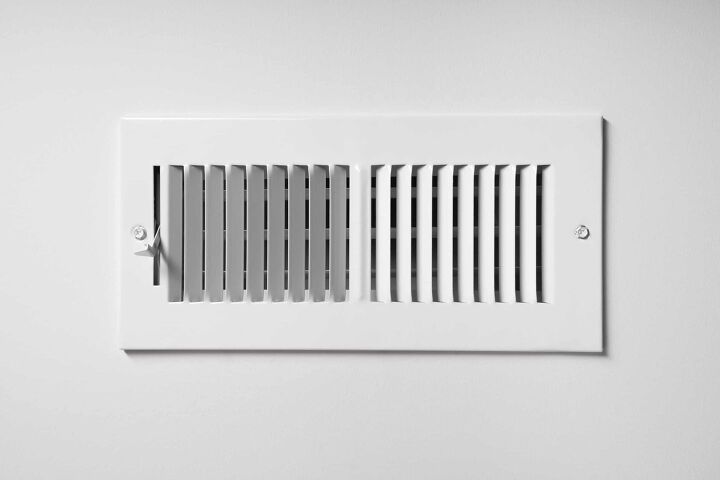How To Reduce Noise From A Return Air (Step-by-Step Guide)

Air return vents are one of the most important aspects of your home’s HVAC system. They allow air to both enter and leave the HVAC system and maintain proper air pressure within the house. Sometimes, though, they can be incredibly noisy which can be inconvenient and annoying.
Open your air vents to reduce noise, make sure that your vents and grills are the correct sizes, and inspect your air filters. Clogged air filters produce loud return air sounds, and you need to clean them to reduce noise. Install additional return vents to alleviate the loud noise and improve air circulation.
By checking all of these things, you should be able to find the culprit of your HVAC noise issues. In this article, we will go through all the steps of checking the system and diagnosing the problem, then fixing it.
Do You Need Central A/C Service or Repair?
Get free, zero-commitment quotes from pro contractors near you.

Before You Begin
Before starting, check to make sure that any noise you are hearing is actually coming from the HVAC system. Sometimes, noises can seem like they are coming from places they actually are not. This is true for your HVAC system since it is all connected and can cause noise to travel.
Check all areas of your house to see if you can replicate the noise. If you have two stories, have someone walk around upstairs while you listen downstairs. If you can replicate the sound, you can look for a way to remedy it.
If you can’t recreate the sound coming from anywhere else, you can start to look at your HVAC system. There are a number of steps you can take that will more than likely take care of the problem.
Step 1: Check That The Vents Are Open
This may seem like it is the most obvious thing, but you might be surprised how often it’s the problem. Vents can often look like they are open when they are not. Because of this, try opening and closing the vents to see if you can make the noise go away.
Return air vents usually have a small lever on the side of them. This will control the positioning of the vents and open or close them. It can sometimes stick or bend, so it is helpful to have a pair of pliers available.
Some vents can only open one half at a time. In these cases, experiment with opening or closing either one to see if the noise disappears. Sometimes, it can be a case of air needing to escape a different side of the vent.
Step 2: Check Duct Work
Another thing to check when trying to fix the noise is the ductwork of your HVAC system. This is the series of tubes that connect the different rooms of the house. Because of this, sounds within the ducts can travel easily.
Sometimes, the duct work within your HVAC system is made of flexible material. This can bend and move with the heat or cold. These bends and turns can cause noise. When air blows against the bends, it can make whistles or pops.
To check the ductwork, shine a flashlight into all of your open vents. From there, you can look to see if there are any noticeable bends or disturbances in the flow. If there are, you can smooth them out by unscrewing the vent and reaching in.
Step 3: Clean The Filters
The filters throughout the house can be a source of noise as well. These can easily get filled up with dust and dirt and become traps for air. These air traps can rattle and pop just like the ductwork.
Filters are usually located in an access door next to the indoor unit. These filters will have arrows on them that indicate the air flow. With these arrows, you can see which side is exposed to the most dirt.
If your filters are dirty, you can replace them with new ones. This should improve not only any noise tendencies, but also the overall performance of the system. Clean filters are healthier and they also allow for more efficient temperature regulation.
Step 4: Check That You Have The Right Vents and Grilles
This is another step that may seem simple and slightly self-explanatory but is very important. Making sure that you have correctly sized vents and grilles on your system could be a lifesaver. You may take it for granted that they are the right ones, but that could be incorrect.
Go around your home and look at all the return vents that you can find. They should all completely cover the vent openings they are over. Look for any gaps or holes where the vents meet the wall.
If there is an opening in any of the vents that shouldn’t be there, this could result in a whistle. This whistle could travel to all different parts of the house due to the ductwork. Fixing anything that isn’t sealed up tight could solve your noise problem.
Step 5: Decrease Static Pressure
The static pressure in your HVAC system is the natural give and take of airflow within the system. If the pressure builds up too much, it can cause creaking and shifting in the system. As we know, this can travel all throughout the house.
To decrease the static pressure, you can do things like install more return vents. More return vents will allow for more air to flow out of the ductwork. That decrease in pressure can help the ductwork and system relax and make less noise.
There are ways to measure the static pressure and see exactly how many more vents you will need. This requires a series of complicated equations and special tools. For this, it may be best to hire an HVAC professional.
If All Else Fails
If you go through the above steps and your return air is still noisy, you should consult with a technician. They have specific training and tools that can measure things that we do not have access to as DIYers. They can also identify any issues within the unit itself.
Sometimes, the noises from your return air can be solved with simple hacks. Other times, they are the result of motor issues or other more complex problems. For these, it is best to call in a professional opinion.
Do You Need Central A/C Service or Repair?
Get free, zero-commitment quotes from pro contractors near you.

Related Questions
Is it okay to close off vents in unused rooms?
Closing off any vents that you may have in rooms you aren’t using can save you energy and money. However, if you are already having problems with noisy return vents, this could make it worse. Closing off vents will increase static pressure throughout the HVAC system.
How many return vents should a house have?
Ideally, you should have one return vent for each room of the house. Depending on how big a room is, it could need more than one vent. However many you need to keep static pressure at a reasonable level is enough.
What happens if there is not enough return air?
If your home is not getting enough return air, it will not heat up or cool down properly. It will not be generating enough flow of air to make any difference in the environment. To make sure you’re getting enough return air, make sure you have enough vents in the house.

I am a writer and editor from The Bay Area, CA. When I'm not typing, I enjoy hiking, woodworking and gardening. I love sharing tips and discovering new trends in home improvement.
More by Michael Oconnor



























